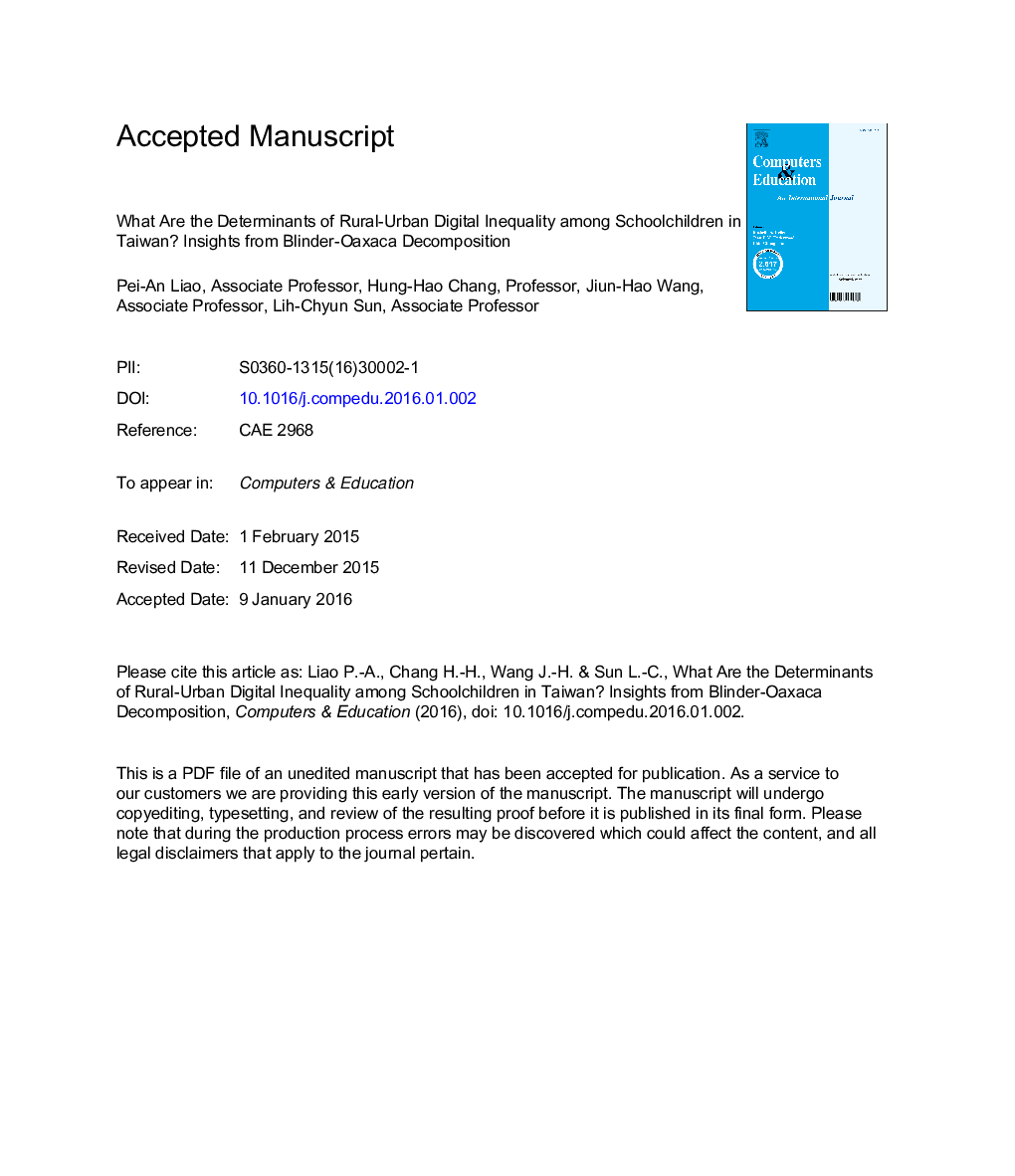| Article ID | Journal | Published Year | Pages | File Type |
|---|---|---|---|---|
| 6834903 | Computers & Education | 2016 | 45 Pages |
Abstract
Since digital inequality among schoolchildren may exacerbate the existing rural-urban disparity, determining how to reduce rural-urban digital inequality among students remains an important policy issue. This study uses a unique and nationally representative dataset of 1953 elementary and junior high school students in Taiwan to examine the extent to which students' characteristics, autonomy of use, family background and resource inputs may be associated with the digital self-efficacy of schoolchildren. The Blinder-Oaxaca decomposition method was applied to further investigate the relative contributions the observed characteristics made to the rural-urban digital inequality of schoolchildren. The results show that the observed differences in factors associated with students' digital self-efficacy account for 35% of rural-urban digital inequality. Furthermore, the number of computers in homes and schools, internet connectivity at home, mothers' educational level, and the number of weekly computer classes provided by the school play a significant role with regard to the digital inequality between rural and urban students.
Related Topics
Social Sciences and Humanities
Social Sciences
Education
Authors
Pei-An Liao, Hung-Hao Chang, Jiun-Hao Wang, Lih-Chyun Sun,
